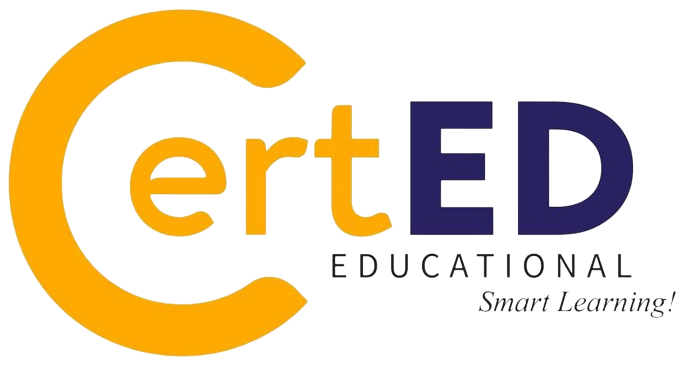Corporate Training Strategies: Building a Skilled Workforce

In the dynamic world of modern business, staying ahead means equipping your workforce with the right tools and knowledge to thrive. Corporate training plays a pivotal role in achieving this goal, offering a structured approach to employee development that bridges skill gaps, fosters innovation, and drives productivity.
A skilled workforce doesn’t just execute tasks—it becomes a catalyst for organizational growth. This blog explores in-depth strategies to design and implement effective corporate training programs while highlighting their benefits and emerging trends.
Understanding the Importance of Corporate Training
Corporate training extends far beyond onboarding new hires. It’s an ongoing commitment to learning and development that prepares employees to adapt to industry changes, master new technologies, and enhance their competencies. Here are some of the key reasons why corporate training is essential for businesses today:
1. Bridging Skill Gaps
Industries evolve rapidly, and employees may need help keeping up with emerging trends. Training ensures your workforce stays relevant and confident in tackling new challenges.
2. Enhancing Productivity
When employees possess the skills they need, they complete tasks more efficiently, reducing errors and boosting overall output.
3. Promoting Innovation
Training programs encourage creative problem-solving and introduce employees to fresh perspectives and methodologies, fostering innovation within the organization.
4. Increasing Employee Retention
Employees who feel invested in their personal and professional development are more likely to remain loyal to their organizations.
5. Strengthening Leadership
Corporate training isn’t just for entry-level staff. Leadership development programs prepare your organization’s future leaders, ensuring smooth transitions and sustained growth.
Key Benefits of a Skilled Workforce
A workforce that is continually learning and growing is an asset that directly impacts your business’s success. Here are some notable benefits:
-
Higher Job Satisfaction: Employees feel valued when their skill development is prioritized, leading to improved morale and job satisfaction.
-
Reduced Turnover Costs: Investing in training reduces turnover, saving significant costs associated with recruitment and onboarding.
-
Stronger Client Relationships: Skilled employees deliver better customer experiences, leading to higher client satisfaction and loyalty.
-
Enhanced Competitive Edge: A well-trained team can outmaneuver competitors by adapting quickly to market changes and delivering superior results.
Effective Corporate Training Strategies
Developing a comprehensive corporate training strategy requires careful planning and execution. Below are actionable steps to create impactful training programs:
1. Assess Training Needs
Before launching any program, identify where your employees need support. Conduct skills assessments, review performance data, and gather feedback from team members to pinpoint gaps.
2. Set Clear Objectives
Define what you hope to achieve with your training initiatives. Are you upskilling your workforce to adopt new technologies, preparing employees for leadership roles, or improving customer service? Clear goals help measure the effectiveness of your training efforts.
3. Personalize Learning Experiences
One-size-fits-all approaches often fall short. Tailor your programs to individual learning styles and specific job roles. For instance, a data analyst may benefit from advanced Power BI training, while a marketing professional might focus on social media strategies.
4. Embrace Technology
Leverage digital tools like Learning Management Systems (LMS) and virtual training platforms to create flexible, engaging programs. Consider integrating tools for gamification and AI-driven insights to enhance learning outcomes.
5. Combine Technical and Soft Skills Training
Technical skills are crucial, but soft skills such as communication, emotional intelligence, and problem-solving are just as important.
6. Monitor and Evaluate Progress
Continuously assess the impact of your training initiatives. Use pre- and post-training evaluations, employee feedback, and performance metrics to measure success and refine future programs.
Corporate Training Formats: Choosing the Right Approach
Corporate training can take many forms, each suited to different learning preferences and organizational needs.
1. Instructor-Led Training (ILT)
Traditional classroom-style training allows for real-time interaction between trainers and participants. It’s ideal for complex topics that require in-depth discussion and hands-on practice.
2. E-Learning
Digital learning platforms provide the flexibility for employees to learn at their own pace, making them especially beneficial for teams spread across different locations.
3. Hybrid Training
Combining in-person and online elements, hybrid training provides the best of both worlds, catering to diverse learning preferences.
4. Microlearning
Concise and targeted learning modules are ideal for busy professionals. These bite-sized lessons improve retention and minimize disruption to work schedules.
5. On-the-Job Training
Hands-on learning is among the most effective methods. Pair employees with mentors or provide real-time projects to enhance practical skills.
The Role of Leadership in Corporate Training
Leadership plays a crucial role in the success of any corporate training initiative. Here’s how managers and leaders can contribute:
-
Champion Training Programs: Leaders should actively promote training as a priority and lead by example by participating in learning activities.
-
Provide Constructive Feedback: Regular feedback helps employees understand their progress and areas of improvement.
-
Allocate Resources: Ensure sufficient budget, tools, and time are dedicated to training programs.
-
Recognize Achievements: Celebrate milestones to motivate employees and highlight the value of continuous learning.
Emerging Trends in Corporate Training
The corporate training landscape is continuously evolving. Here are key trends defining the future of workplace learning:
1. Gamification
Integrating game elements such as points, badges, and leaderboards enhances engagement and encourages employees to participate actively in training.
2. AI-Powered Learning
Artificial intelligence enables personalized learning paths by analyzing employee performance and suggesting relevant content.
3. Mobile Learning
With the rise of mobile technology, employees can access training anytime, anywhere, increasing convenience and flexibility.
4. Virtual and Augmented Reality
Immersive technologies like VR and AR provide realistic training environments, especially useful in industries like healthcare, manufacturing, and logistics.
5. Focus on Diversity and Inclusion Training
Organizations are increasingly investing in programs that educate employees on creating inclusive workplaces.
Common Challenges in Corporate Training
Despite its many benefits, corporate training can face several challenges:
-
Lack of Employee Engagement: Employees may view training as a chore rather than an opportunity.
-
Budget Constraints: Limited resources can hinder the quality and scope of training initiatives.
-
Inconsistent Implementation: Without a standardized approach, training programs may yield uneven results.
-
Measuring ROI: Determining the financial impact of training programs can be complex.
How to Overcome These Challenges
-
Foster a culture of learning by emphasizing the personal and professional benefits of training.
-
Start small with scalable programs and gradually expand as budgets permit.
-
Use data-driven tools to track progress and demonstrate the value of training investments.
Measuring the ROI of Corporate Training
Proving the return on investment (ROI) of corporate training is critical to securing ongoing support and funding. Here’s how you can measure it effectively:
-
Track Performance Metrics: Monitor changes in productivity, sales, or other relevant KPIs before and after training.
-
Evaluate Employee Feedback: Gather insights on training effectiveness through surveys and interviews.
-
Assess Retention Rates: Measure whether employees stay longer in organizations that invest in their growth.
-
Calculate Cost Savings: Compare costs of training programs to savings from reduced turnover or improved efficiencies.
Conclusion
A well-planned and executed corporate training strategy is essential for building a skilled, motivated, and future-ready workforce. It enables employees to adapt to changes, enhances organizational efficiency, and drives long-term business success.
By embracing innovative tools, personalizing learning experiences, and continuously optimizing training programs, businesses can foster a culture of continuous development that benefits both employees and the organization as a whole.
Are you prepared to strengthen your workforce and secure your business for the future? Start building impactful corporate training strategies today!





